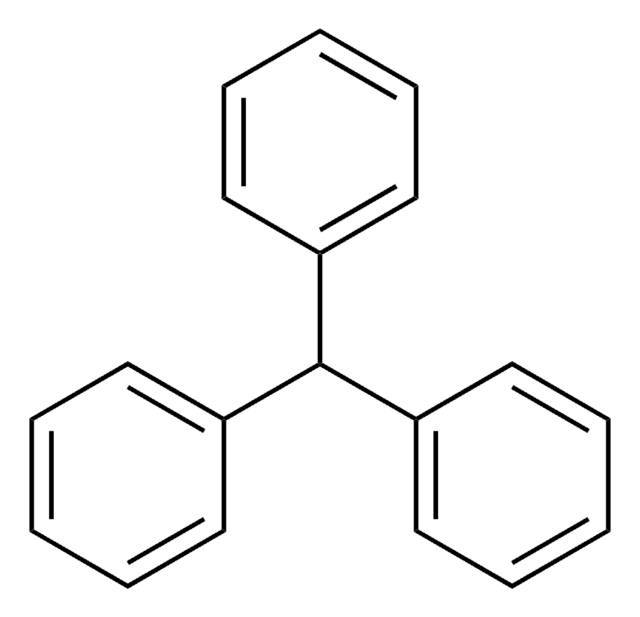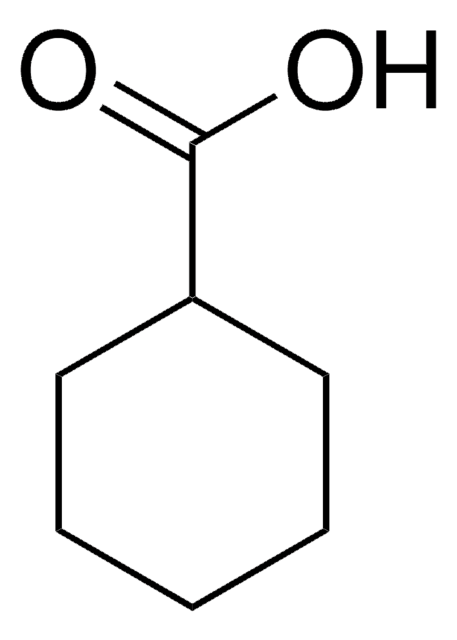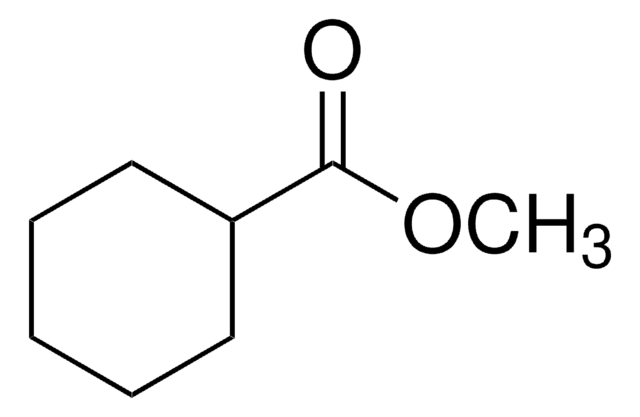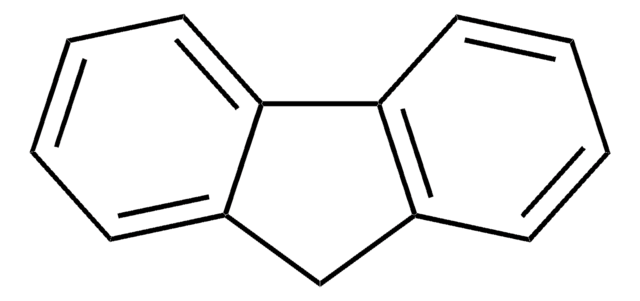215376
Acenaphthene
99%
Synonym(s):
1,8-Ethylenenaphthalene
Sign Into View Organizational & Contract Pricing
All Photos(4)
About This Item
Empirical Formula (Hill Notation):
C12H10
CAS Number:
Molecular Weight:
154.21
Beilstein:
386081
EC Number:
MDL number:
UNSPSC Code:
12352100
PubChem Substance ID:
NACRES:
NA.22
Recommended Products
vapor density
5.32 (vs air)
Quality Level
vapor pressure
10 mmHg ( 131 °C)
Assay
99%
form
solid
bp
279 °C (lit.)
mp
90-94 °C (lit.)
solubility
chloroform: soluble 5%, clear, colorless to faintly yellow
SMILES string
C1Cc2cccc3cccc1c23
InChI
1S/C12H10/c1-3-9-4-2-6-11-8-7-10(5-1)12(9)11/h1-6H,7-8H2
InChI key
CWRYPZZKDGJXCA-UHFFFAOYSA-N
Looking for similar products? Visit Product Comparison Guide
Related Categories
General description
Acenaphthene is a polycyclic aromatic hydrocarbon used as a building block in the synthesis of polymers and resins.
Bacterial oxidation of acenaphthene by Beijerinckia sp. and Beijerinckia sp. strain B8/36 has been reported. Acenapthene forms 1:1:1 inclusion compound by complexing with inclusion compound of β-cyclodextrin and alcohol. Kinetics of the atmospherically important gas-phase reactions of acenaphthene with OH and NO3 radicals, O3 and N2O5 has been investigated at 296 ± 2K.
Bacterial oxidation of acenaphthene by Beijerinckia sp. and Beijerinckia sp. strain B8/36 has been reported. Acenapthene forms 1:1:1 inclusion compound by complexing with inclusion compound of β-cyclodextrin and alcohol. Kinetics of the atmospherically important gas-phase reactions of acenaphthene with OH and NO3 radicals, O3 and N2O5 has been investigated at 296 ± 2K.
Application
- Optimization of Acenaphthene Production: A research article demonstrated the use of high-efficiency HILIC capillary columns for slurry packing at 2100 bar, showcasing an advanced technique that could optimize the synthesis and purification of complex polycyclic aromatic hydrocarbons like acenaphthene, essential for enhancing productivity and purity in chemical processes (Anderson et al., 2024).
- Environmental Impact Assessment: A study investigated the relationship between polycyclic aromatic hydrocarbons (PAHs) and reactive oxygen species in PM2.5 emissions, providing a critical evaluation of the environmental impacts of compounds like acenaphthene in industrial regions, thus informing pollution control and environmental safety strategies (Xu et al., 2024).
- Advances in Organic Semiconductor Materials: Research focused on the synthesis and properties of pyrene-bridged acenaphthenes, contributing to the development of novel organic semiconductor materials, which are crucial for electronic and photonic applications, thus broadening the utility of acenaphthene in high-tech industries (Polkaehn et al., 2023).
- Bioassays for Organic Pollutants: Researchers developed bioassays for organic pollutants, including acenaphthene, using chemical activity-based loading of artificial sediments. This approach offers a new method to assess ecological risks associated with organic contaminants, while also optimizing the derivation of predicted no-effect concentrations (PNECs) for polycyclic aromatic hydrocarbons, critical for regulatory compliance and environmental health. (Abel et al., 2024), (Sun et al., 2023).
Signal Word
Warning
Hazard Statements
Precautionary Statements
Hazard Classifications
Aquatic Acute 1 - Aquatic Chronic 1
Storage Class Code
11 - Combustible Solids
WGK
WGK 3
Flash Point(F)
257.0 °F - closed cup
Flash Point(C)
125.0 °C - closed cup
Personal Protective Equipment
dust mask type N95 (US), Eyeshields, Gloves
Choose from one of the most recent versions:
Already Own This Product?
Find documentation for the products that you have recently purchased in the Document Library.
Customers Also Viewed
Room-temperature phosphorescence from 1: 1: 1 inclusion compounds of. beta.-cyclodextrin with brominated alcohols and acenaphthene.
Hamai S.
Journal of the American Chemical Society, 111(11), 3954-3957 (1989)
Kinetics of the reactions of acenaphthene and acenaphthylene and structurally-related aromatic compounds with OH and NO3 radicals, N2O5 and O3 at 296?2 K.
Atkinson R and Aschmann SM.
International Journal of Chemical Kinetics, 20(7), 513-539 (1988)
Alexander K Lemmens et al.
Physical chemistry chemical physics : PCCP, 21(7), 3414-3422 (2018-11-01)
In this work we report on the experimental and theoretical investigations of the progressional complexation of the polycyclic aromatic hydrocarbon (PAH) acenaphthene with itself and with water. In the interstellar medium, PAH complexes are an important link between molecular gas
M J Schocken et al.
Applied and environmental microbiology, 48(1), 10-16 (1984-07-01)
A Beijerinckia sp. and a mutant strain, Beijerinckia sp. strain B8/36, were shown to cooxidize the polycyclic aromatic hydrocarbons acenaphthene and acenaphthylene. Both organisms oxidized acenaphthene to the same spectrum of metabolites, which included 1-acenaphthenol, 1-acenaphthenone, 1,2-acenaphthenediol, acenaphthenequinone, and a
Aurore Vergnoux et al.
Environmental research, 111(2), 193-198 (2010-02-13)
Surface (0-5 cm) and subsurface (-5 to 15 cm) soils from burned forest areas in South of France were analyzed to determine contents of 14 priority polycyclic aromatic hydrocarbons (PAHs) and their distribution profile. The sampling procedure allowed us to
Our team of scientists has experience in all areas of research including Life Science, Material Science, Chemical Synthesis, Chromatography, Analytical and many others.
Contact Technical Service










